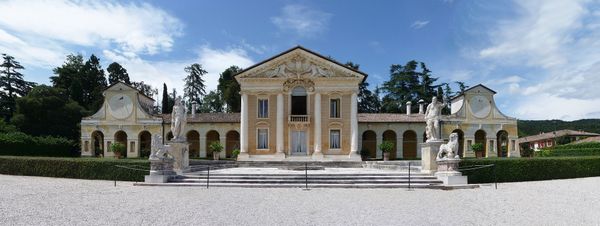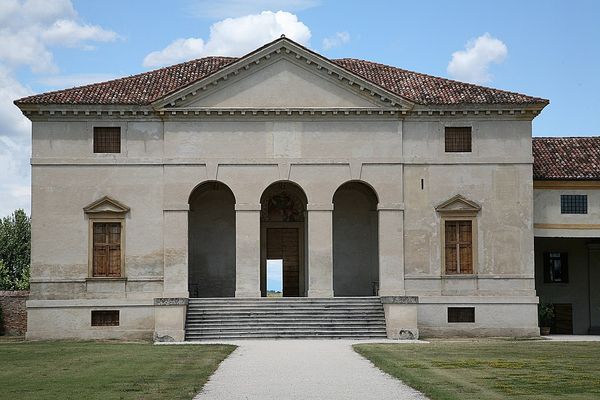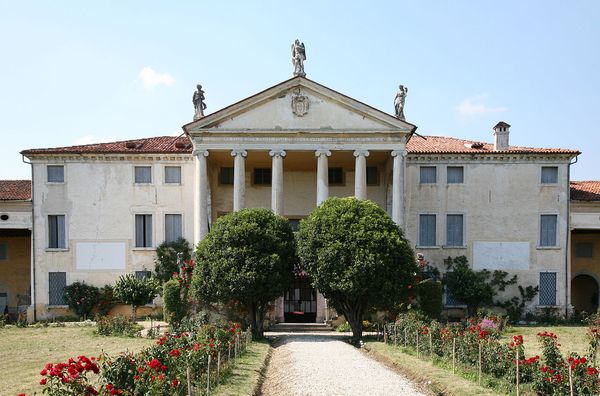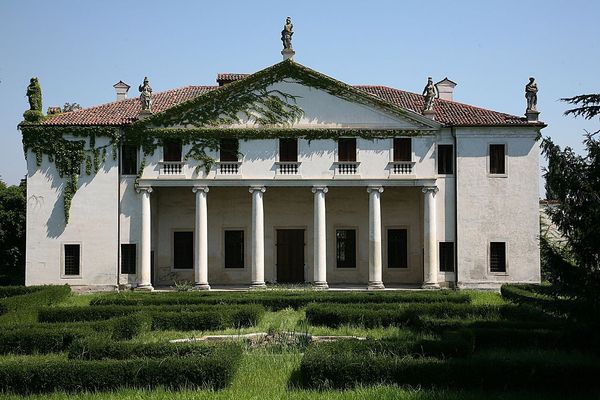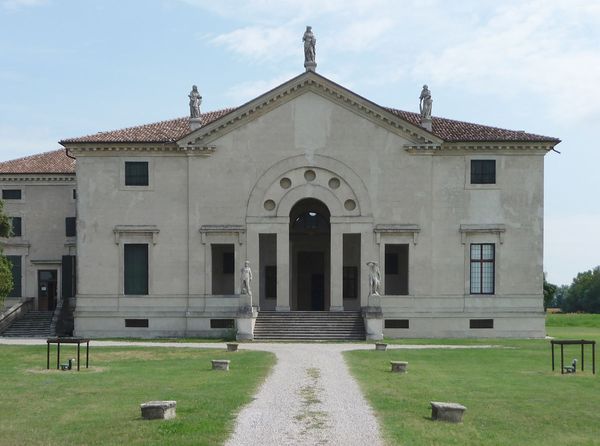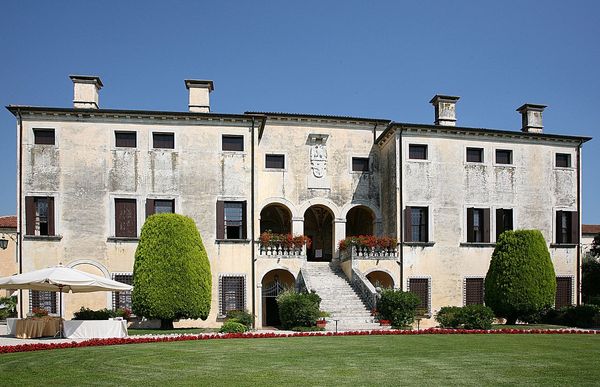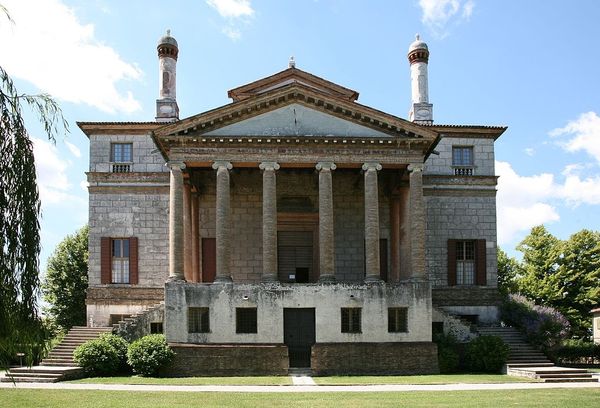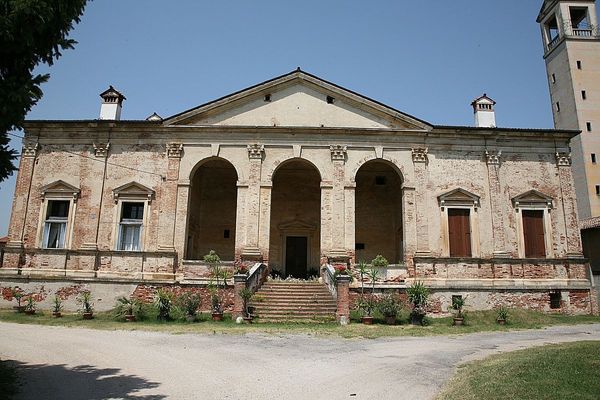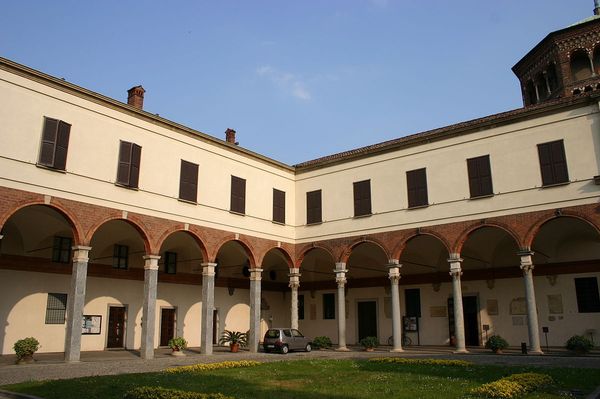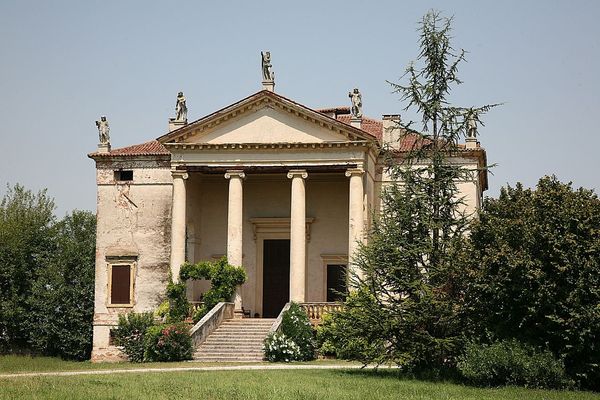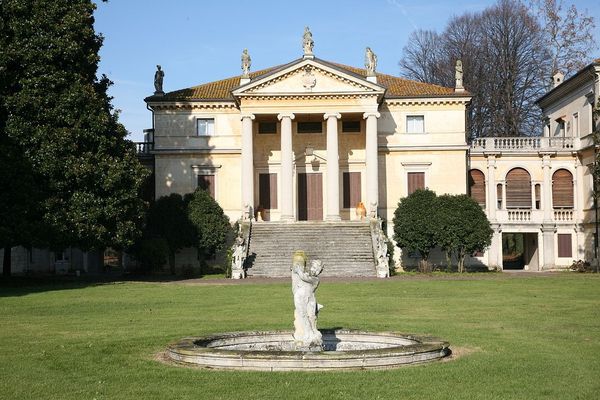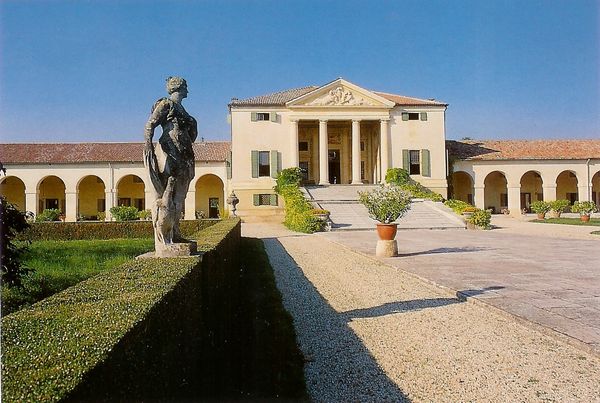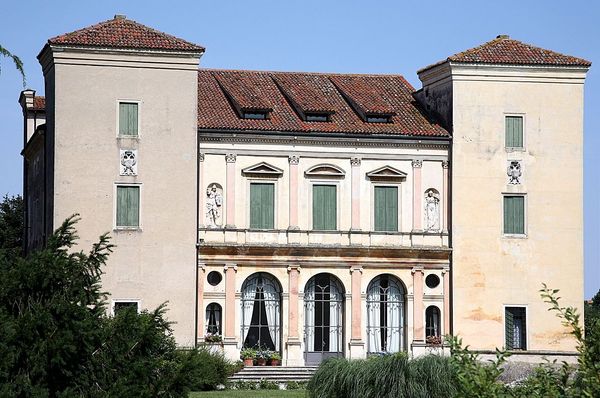
site-specific, architecture
#
landscape
#
architectural photography
#
historic architecture
#
column
#
arch
#
site-specific
#
italian-renaissance
#
architecture
Copyright: Public domain
Curator: Before us stands a site-specific work of architecture, Villa Serego, conceived by Andrea Palladio around 1570. A slice of the Italian Renaissance frozen in time. Editor: It's almost aggressively serene, isn't it? That muted palette, the relentless geometry... I feel like I should be wearing a toga and contemplating the meaning of virtue. Curator: The columns! Have you noticed the rustication of those enormous columns? It’s a very deliberate choice, contrasting with the typical smooth surfaces of classical architecture. Editor: Definitely. The banded columns, for me, almost represent an aspiration for greatness weighed down by… history itself. All that weight pressing down. Symbolically, what are the foundations these are rooted in? Curator: Interesting observation. In Palladio’s own words, it’s meant to reflect the agrarian roots of the Serego family. A noble intention to express the values and ideals associated with rural life in stone. You are thinking about it like something dug up? It might come from that thought process? Editor: Exactly, an architectural metaphor, if you will. This is not only where someone resides; this building and everything else here is a reflection of who they are or who they wish to be, made tangible, a testament built over the course of generations. Does this building reflect this now? The family? The meaning? Curator: Absolutely! And to continue in that thought – and I cannot resist observing --Palladio looked back to antiquity while innovating. Editor: I appreciate the push and pull. We can find ancient ideas recast for a new age. That’s Renaissance at its finest: rebirth, reflection. Thank you for sharing!
Comments
No comments
Be the first to comment and join the conversation on the ultimate creative platform.
